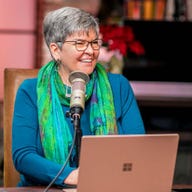Microsoft Big Brains: Brian Harry

Just before retiring from day-to-day responsibilities at Microsoft, Chairman Bill Gates said that he expected Microsoft's 22 Technical Fellows to get a lot more publicly visible -- now that they wouldn't be living in his shadow. While some of the Microsoft fellows already have been active on the public-speaking circuit, many of them are not widely known outside the company.
I'm launching this series -- "Microsoft Big Brains" -- to help remedy that shortcoming. In the coming weeks, I am hoping to profile as many of the company's tech fellows as to whom I can get access.
Microsoft's Technical Fellows came to the company via a variety of different routes. Some of them run divisions inside the company; some focus on particularly thorny technical issues that may span a variety of product units. Regardless of where they sit in the organization, the fellows all have been charged with helping Microsoft craft its next-gen products and strategies, much the way that Gates used his regular "Think Weeks" to prioritize what Microsoft needed to do next.

Microsoft is pushing hard to get into the application lifecycle (ALM) management space, as anyone who's been trying to keep up with all the recent news around Microsoft's "Oslo" modeling products and strategy is well aware.
But ALM isn't just about modeling. In its broadest sense, it's about collaboration, that buzzword darling of the Web 2.0 set.
"My whole career has been about developers and/or some kind of collaboration product for developers," says Harry. "Now I get to work on a collaboration product for developers."
Harry's guiding principle is he works on products for which he would be a potential customer, he says. That's why he has focused on technologies like ALM and .Net/CLR during his Microsoft tenure.
Speaking of the .Net and the CLR, there is still plenty of work to be done, Harry says.
"One problem the CLR has faced is deployment. Silverlight is obviously a big asset here, but deployment and Visual Basic integration are quite still a challenge," Harry admits. ".Net has been wildly successful in the server space, but has been less so in the client one."
"We still live in a dual world: CLR developers and unmanaged developers," Harry continues. "We need to bridge the gap and to have one programming model. Right now, the (Microsoft) Developer Division still has to target two different programming models. The proof point will be when Windows and Office embrace .Net as a first-class model for their applications. Windows APIs (application programming interfaces) need to come out as .Net Framework classes."
For all of the “Microsoft Big Brains” profiles, check out the Big Brains page.